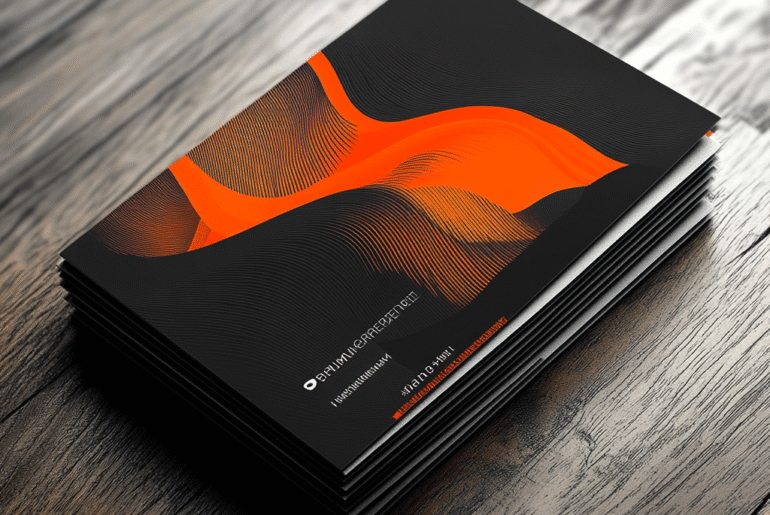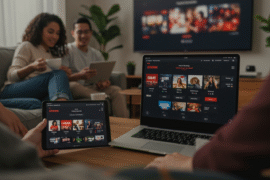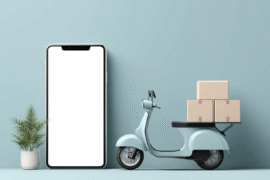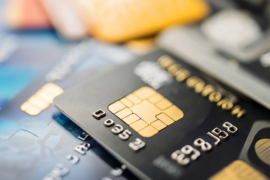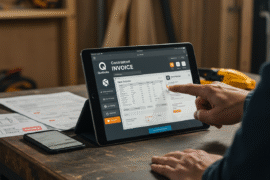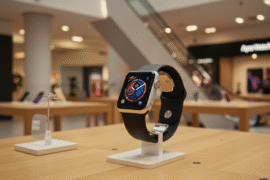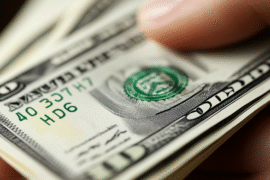This article may contain references to products or services from one or more of our advertisers or partners. We may receive compensation when you click on links to those products or services. Nonetheless, our opinions are our own.
The information presented in this article is accurate to the best of our knowledge at the time of publication. However, information is subject to change, and no guarantees are made about the continued accuracy or completeness of this content after its publication date.
Even though we live in a more digital world, business cards are still important for networking. They do more than just give you contact information; they also show what a person’s brand and professional identity are. A well-made business card shows that you are trustworthy, pay attention to details, and are serious about your work. It can help you get in touch with people, make a good first impression, and remind you of a meeting. But today, there are so many design options that picking a business card that stands out for the right reasons takes planning and creativity. This article talks about a few interesting business card design ideas that combine form and function. Each design idea is meant to help professionals make cards that look great and also show off their personality and purpose.
Minimalist Elegance
Less is more in the world of business cards, and minimalist designs featuring clean lines and ample white space convey professionalism while keeping information easy to read. A minimalist aesthetic is not just a trend; it is an effective way to communicate clarity. These designs allow essential information to stand out without overwhelming the recipient, encouraging better retention and reflecting a modern approach to branding.
- Sleek Typography: Use modern fonts that enhance readability and maintain elegance.
- Subtle Color Schemes: Apply muted tones or monochromatic palettes to avoid distraction.
- Strategic Use of Space: Leave white space around elements to ensure clarity and balance.
Bold Typography
Large, eye-catching fonts serve as a focal point and reflect brand personality. Typeface selection helps define tone and instantly communicate industry alignment.
- Modern Fonts: Sleek, sans-serif fonts convey innovation.
- Classic Typefaces: Serif fonts project tradition and reliability.
- Playful Styles: Creative fonts suit artistic or informal fields.
Oversized text increases visibility and memorability while establishing a strong identity.
Unique Shapes
Stepping away from standard rectangles makes cards visually and physically distinctive.
- Rounded Corners: Add softness and reduce wear.
- Circular Cards: Rare and impactful, ideal for creative layouts.
- Hexagonal Cards: Offer geometric appeal for design or tech industries.
Creative shapes must still support legibility and professionalism.
Textured Finishes
Tactile elements create memorable experiences and reflect quality.
- Embossing: Raises select elements for visual and tactile contrast.
- Linen Textures: Deliver a refined and substantial feel.
- Recycled Paper: Emphasizes sustainability without sacrificing elegance.
Each finish can enhance the perceived value of the card.
Eye-Catching Imagery
Well-chosen visuals convey brand stories at a glance.
- Relevance: Align graphics or photos with the brand’s message.
- Simplicity: Support rather than overwhelm the key content.
- Quality Over Quantity: A single compelling image is often more powerful than many.
Striking visuals can build emotional connection and strengthen recall.
Dual-Sided Designs
Utilizing both sides of a card maximizes space and visual impact.
- Front: Prioritize name, title, phone number, email, and website.
- Back: Use for logos, taglines, quotes, or additional services.
A dual-sided approach maintains aesthetic appeal while enhancing functionality.
Voted "Best Overall Budgeting App" by Forbes and WSJ
Monarch Money helps you budget, track spending, set goals, and plan your financial future—all in one app.
Get 50% OFF your first year with code MONARCHVIP
Vibrant Color Palettes
Color influences perception and recognition.
- Audience Alignment: Choose hues that resonate with target clients.
- Bold Accents: Highlight names or logos effectively.
- Complementary Schemes: Balance vibrant tones with softer shades.
A harmonious palette communicates professionalism and creativity.
QR Code Integration
QR codes link the physical to the digital world seamlessly.
- Portfolios: Let recipients instantly access work samples.
- Social Media: Encourage engagement and following.
- Contact Downloads: Allow saving information with a scan.
- Email Sign-Ups: Grow mailing lists effortlessly.
- Promotions: Share exclusive content or discounts.
Positioning must be intuitive and non-intrusive for best results.
Transparent Elements
Translucent plastic cards add intrigue and modern sophistication.
- Layered Effects: Create depth and contrast with partially see-through elements.
- Unique Shapes: Combine transparency with geometric forms.
- Eco-Friendly Options: Many plastic cards are recyclable, adding sustainability appeal.
These materials attract attention while maintaining a sleek aesthetic.
The Art of Calligraphy
Handwritten fonts blend tradition and personality.
- Creative Industries: Showcase authenticity and artistry.
- Luxury Brands: Emphasize elegance and exclusivity.
- Cultural Institutions: Reflect heritage and refinement.
Calligraphy adds emotional depth and character often missing in digital designs.
Eco-Friendly Options
Sustainability is both a value and a design choice.
- Reclaimed Paper: Reduces environmental impact while offering texture.
- Biodegradable Plastics: Provide durability and decomposition benefits.
- Sustainable Vendors: Work with partners who share eco-conscious values.
- Recycling Logos: Subtly promote green messaging.
These choices communicate integrity and responsibility.
Local Flavor Inspirations
Culture can be a brand’s strongest design asset.
- Motifs from Heritage: Use symbols or patterns unique to local roots.
- Cultural Icons: Represent regional values or history.
- Natural Palettes: Draw colors from local landscapes.
- Craftsmanship: Highlight local production or artisan work.
Such designs stand apart from generic templates and connect more deeply with audiences.
Conclusion
A business card that makes an impression is more than just a name and number on paper; it is a silent ambassador of professionalism. In a short conversation, it shows values, attention to detail, and a sense of self. Each detail tells a story about the person or business it represents, whether it’s through simple design, unusual materials, or cultural expression. Professionals who put thought into their business cards have a better chance of people remembering their brand and getting more involved when they network. People can make cards that connect with, inform, and inspire by using smart design techniques and making sure they fit with the brand’s core values. In the end, in a competitive market, a well-designed business card can set you apart from the rest and have an effect that lasts long after the handshake.
Frequently Asked Questions
What size is standard for business cards?
The most commonly used business card size is 3.5 x 2 inches. This dimension fits easily into wallets, cardholders, and standard filing systems. While variations do exist based on regional preferences or design innovation, sticking close to this size ensures practicality and consistency.
Are textured business cards more expensive?
Yes, textured business cards usually come at a higher price point due to additional production processes. Features like embossing, foil stamping, and specialty paper types such as linen or cotton elevate the tactile feel and appearance of the card. These upgrades, while costlier, can significantly enhance brand perception and memorability.
Should QR codes be included on business cards?
Including a QR code on a business card is a smart way to bridge physical and digital touchpoints. It provides a seamless way for recipients to view portfolios, download contact information, visit a website, or follow a social media page. Placement should be clear yet unobtrusive, ensuring the code is easy to scan without disrupting the design.
What materials are considered eco-friendly for business cards?
Eco-friendly business card options include recycled paper, reclaimed fiberboard, and biodegradable plastics. Using soy-based inks and choosing suppliers with sustainable practices also adds to the eco-conscious footprint. These materials not only reduce environmental impact but also reflect positively on a brand’s commitment to sustainability.
Can business cards be a different shape than rectangular?
Yes, business cards can take on custom shapes such as circles, squares, or hexagons. Non-traditional shapes can help differentiate a brand and make the card more visually appealing. However, designers should ensure that readability, portability, and professional tone are maintained despite the creative layout.

Reviewed and edited by Albert Fang.
See a typo or want to suggest an edit/revision to the content? Use the contact us form to provide feedback.
At FangWallet, we value editorial integrity and open collaboration in curating quality content for readers to enjoy. Much appreciated for the assist.
Did you like our article and find it insightful? We encourage sharing the article link with family and friends to benefit as well - better yet, sharing on social media. Thank you for the support! 🍉
Article Title: Best Business Card Designs
https://fangwallet.com/2025/07/03/best-business-card-designs/The FangWallet Promise
FangWallet is an editorially independent resource - founded on breaking down challenging financial concepts for anyone to understand since 2014. While we adhere to editorial integrity, note that this post may contain references to products from our partners.
The FangWallet promise is always to have your best interest in mind and be transparent and honest about the financial picture.
Become an Insider

Subscribe to get a free daily budget planner printable to help get your money on track!
Make passive money the right way. No spam.
Editorial Disclaimer: The editorial content on this page is not provided by any of the companies mentioned. The opinions expressed here are the author's alone.
The content of this website is for informational purposes only and does not represent investment advice, or an offer or solicitation to buy or sell any security, investment, or product. Investors are encouraged to do their own due diligence, and, if necessary, consult professional advising before making any investment decisions. Investing involves a high degree of risk, and financial losses may occur including the potential loss of principal.
Source Citation References:
+ Inspo
There are no additional citations or references to note for this article at this time.
